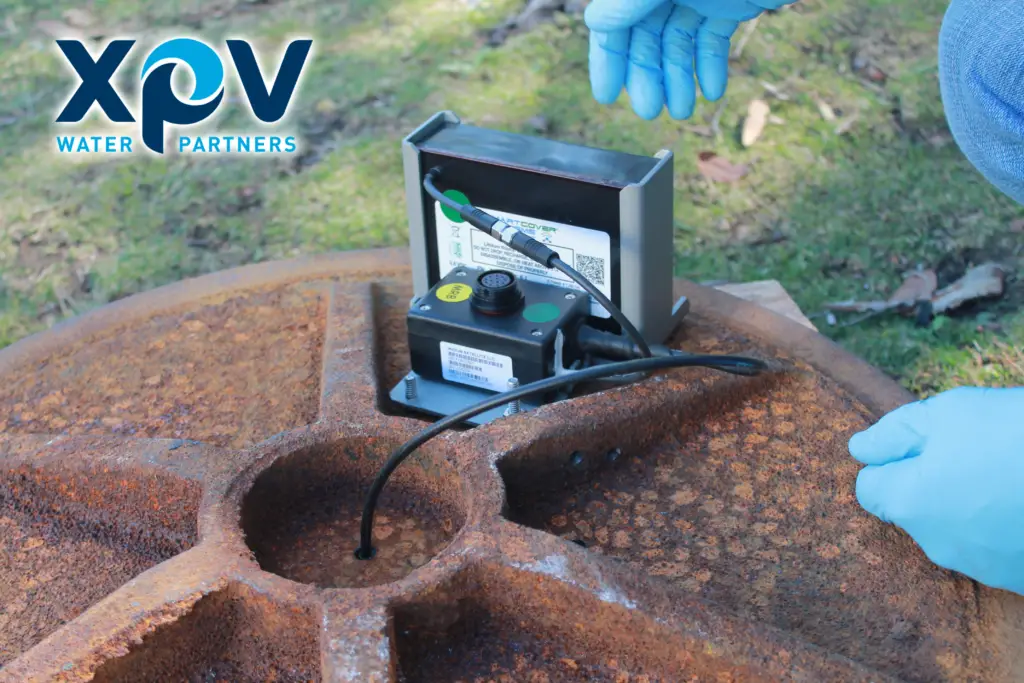From increasing underground intelligence to significantly reducing sewer spills, utilities are seeing the benefits of a smart sewer.
As cities around the world strive to make transformative use of sensors and communications devices to better manage assets and resources, there is a growing interest from water and wastewater utilities. Seeing positive results from other innovative water technologies, they’re increasingly asking how these solutions could help them address aging infrastructure, mitigate the impacts of climate change, and improve overall performance.

Smart water solutions not only collect and monitor valuable data, but they also help utilities use this information to better understand their systems and make smarter decisions about how to manage them. By gathering and analyzing real-time data about sewers, the SmartCover technology is helping North American utilities predict, detect, and prevent spills, saving millions while protecting public health and the environment. The technology has several applications – it can also reduce the need for high-frequency cleanings, locate areas of inflow and infiltration, detect intrusion, and control toxic sewer gases.
Greg Quist, President and CEO of California-based SmartCover, compare using the company’s sensor technology to a heart monitor. “We provide an EKG for sewers,” he said. “Much of what goes wrong with sewers can’t be observed by simply opening a manhole. Even with frequent field visits, it can be difficult to spot the signs of a future sewer backup. With our sensors, we can monitor sewer levels 24/7, determine any changes in patterns, and automatically alert utilities to potential issues.”
Changing the game
By taking advantage of what they learn about their sewer networks, utilities are making their operations more efficient, passing the savings on to ratepayers or other projects, and contributing to safer, more environmentally responsible cities.
David Henderson of XPV Water Partners – a water investment fund – said innovative water technologies are changing the game for water and wastewater utilities. “Utilities are facing a convergence of events that are impacting their operations, from old infrastructure to extreme weather events to more stringent regulations. When we invest in innovative companies like SmartCover, it’s because we see a strong, convincing opportunity to enable utilities to better manage the unprecedented challenges that they are facing.”
In 2016, XPV Water Partners made a strategic investment in SmartCover. “Partnering with XPV has given our company the ability to rapidly pursue our vision and scale our business,” said Quist. “We want our data-backed solutions to provide utilities with intelligent guidance for operations, capital, and asset management. We want them to see and benefit from the results they couldn’t otherwise achieve.”
Case Study: Deploying a smart sewer network
In the United States, much of the wastewater infrastructure is 50-70 years old or older. Frequent cleaning of pipes and sewers are not only costly to a utility, but high frequency cleaning can also further damage these aging networks. Before smart technology, utilities scheduled cleanings with a “just in case” mentality, hoping to prevent backups and spills. With solutions from water technology companies such as SmartCover, they can determine when sewers actually need to be cleaned and prioritize maintenance schedules accordingly.
In a recent project with San Antonio Water System (SAWS), SmartCover technology has significantly improved outcomes for the utility and the community it serves.
Facing an estimated cost of $1 billion under a U.S. EPA Consent Decree, SAWS developed a cleaning program for its 110,000 pipeline segments. Through the program, the utility identified 200 “high risk” sites for regular monthly cleanings.
SAWS took the innovative step of enlisting SmartCover to actively monitor these monthly cleaning sites, telling the utility when the sites needed to be cleaned rather than following a set schedule. Since deploying the SmartCover sensor network, the utility has seen a 95% reduction in cleaning visits. Instead of cleaning 1,300 times, SAWS was able to provide the same level of protection from sanitary sewer overflows (SSOs) with only 65 cleanings, as directed by the SmartCover data. There were no SSOs and 216 times SmartCover alerted SAWS crews to circumstances that previously could have overflowed.
For SAWS, this translates to an estimated average annual ROI of 115% and $3 million in savings over 10 years. The SmartCover system provided a quick return on investment that solves old problems, extends the life of underground assets, eases stress on staff, lowers pressure on user rates, decreases carbon footprint, and decreases operational liabilities. The solution is also allowing SAWS to refocus its resources – time, labour, and money – on other pressing priorities.
Celebrating innovation
By placing confidence in innovative water technologies, utilities are seeing the positive impacts. They’re also being celebrated for using these approaches to tackle serious challenges offering many examples of innovation in the water sector.
On the basis of its results, the SAWS project has received a great deal of positive attention. Water & Wastes Digest and Storm Water Solutions magazines named it a 2019 Top Project, citing “excellence in collaboration, strength in overcoming project challenges and taking their project beyond just construction and technical goals.” And, at WEFTEC 2019 in Chicago, BlueTech Research recognized SAWS as one of the most insightful utilities in America for its deployment of the SmartCover technology.
“Smart solutions are gaining traction in our industry,” said David Henderson. “We can’t manage what we don’t measure, and I think utilities are seeing the value in data and analytics as demonstrated by SmartCover and the tremendous return on investment that their solutions can provide.”










